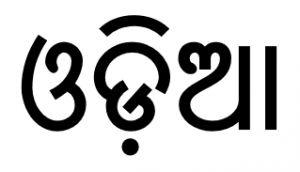Language/Odia/Grammar/Basic-Syllable-Formation
Introduction
In this lesson, you will learn the basics of Odia syllable formation and their structure. Syllables are the building blocks of words, and understanding their formation is crucial in learning to read and write in Odia.
The Odia language has a rich cultural heritage and is spoken by millions of people in Odisha and surrounding states. It uses a unique script, which is an adaptation of Brahmi script. It is essential to understand that the script is syllabic, and each syllable is represented by a character.
To form a basic syllable in Odia, we need to consider the different components of syllables: vowels, consonants, and sometimes, the anusvara and visarga. The syllable structure is (C)(C)V(C), where C represents the consonant, V represents the vowel, and (C) represents optional consonant(s).
We'll start by looking at the basics of Odia vowels.
Vowels
Odia has thirteen vowels, including both long and short vowels. Here is a table that lists all the vowels and their pronunciation.
| Odia | Pronunciation | English Translation |
|---|---|---|
| ଅ | a | as in 'bus' |
| ଆ | ā | as in 'father' |
| ଇ | i | as in 'bit' |
| ଈ | ī | as in 'feet' |
| ଉ | u | as in 'put' |
| ଊ | ū | as in 'hoot' |
| ଏ | e | as in 'ate' |
| ଐ | ai | as in 'hair' |
| ଓ | o | as in 'coat' |
| ଔ | au | as in 'out' |
| ଋ | ṛ | as in 'rat' |
| ୠ | ṝ | as in 'reel' |
| ଅଂ | aṃ | as in 'humming' |
Consonants
Odia has thirty-three consonants, including both stops and fricatives. Here is a table that lists all the consonants and their pronunciation.
| Odia | Pronunciation | English Translation |
|---|---|---|
| କ | k | as in 'keep' |
| ଖ | kh | as in 'khan' |
| ଗ | g | as in 'go' |
| ଘ | gh | as in 'ghost' |
| ଙ | ṅ | as in 'sing' |
| ଚ | c | as in 'cat' |
| ଛ | ch | as in 'chase' |
| ଜ | j | as in 'jump' |
| ଝ | jh | as in 'hedge' |
| ଞ | ñ | as in 'canyon' |
| ଟ | ṭ | as in 'tool' |
| ଠ | ṭh | as in 'loth' |
| ଡ | ḍ | as in 'duck' |
| ଢ | ḍh | as in 'withhold' |
| ଣ | ṇ | as in 'can' |
| ତ | t | as in 'try' |
| ଥ | th | as in 'thin' |
| ଦ | d | as in 'do' |
| ଧ | dh | as in 'that' |
| ନ | n | as in 'name' |
| ପ | p | as in 'pig' |
| ଫ | ph | as in 'phone' |
| ବ | b | as in 'bat' |
| ଭ | bh | as in 'behave' |
| ମ | m | as in 'man' |
| ଯ | y | as in 'yes' |
| ର | r | as in 'run' |
| ଲ | l | as in 'lead' |
| ଳ | ḷ | as in 'bull' |
| ଵ | v | as in 'vain' |
| ଶ | ś | as in 'shed' |
| ଷ | ṣ | as in 'ship' |
| ସ | s | as in 'sip' |
| ହ | h | as in 'ham' |
Basic Syllable Formation
Now that we understand the vowels and consonants let's look at how to form a basic syllable. The syllable in Odia typically follows a CVC pattern, where C represents the consonant and V represents the vowel.
Here are a few examples:
- 'ମ' + 'ା' = 'ମା' (maa)
- 'ନ' + 'ି' = 'ନି' (ni)
- 'ୱ' + 'ା' + 'ଦ' = 'ୱାଦ'(waad)
Note that the same consonant can appear at the beginning and the end of a syllable in some cases, such as କକ (kaka) and ବବ (baba).
In addition to the CVC pattern, Odia also has rare instances of CVCC and CCVCCC syllable structures.
While forming syllables, we must keep in mind that the script is syllabic, and each syllable is represented by a character. Pay close attention to the vowel and the consonants that make up the syllable.
Anusvara and Visarga
Anusvara (ଂ) and visarga (ଃ) are nasalization marks used in Odia when a syllable ends with the consonant 'ମ' or 'ଁଁ'. In Odia script, anusvara is represented using a dot above the base consonant, and visarga is represented using a colon above the base consonant.
Here are a few examples:
- ତଂ (taṃ)
- କଃ (kaḥ)
Anusvara and Visarga are not used in every word, so it is essential to pay close attention to the pronunciation of each word.
Conclusion
In this lesson, we learned about the basics of Odia syllable formation and the components that make up a syllable. By understanding the structure of syllables, we can start to read and write in Odia with a lot less difficulty.
We described the Odia vowels and consonants and how to form basic syllables. We also looked at the types of syllables in Odia, such as CVC, CVCC, and CCVCC. Finally, we covered the nasalization marks Anusvara and Visarga.
It is essential to practice and apply these concepts to real-life examples to become proficient in reading and writing in Odia. Don't forget to review the previous lesson on Odia vowels and consonants, as this will prepare you for the next lesson on Word Formation. Enjoy your journey into the beautiful language of Odia!

